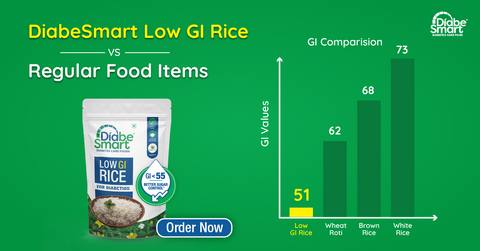Managing diabetes can be confusing with all the dos and don'ts around food. Rice seems tricky to many - some sources say it's a no-go for diabetics, while others claim it can be consumed moderately.
For those living with diabetes, understanding how different types of rice affect blood sugar levels is key. White rice can cause spikes, so moderating intake would be prudent. However, there are alternatives like brown, basmati or wild rice that have less impact on blood glucose.
The most important factors are being mindful of carbohydrate quantities and appropriate portion sizes. While rice may need to be limited, it doesn't have to be eliminated entirely from a diabetic diet. With some guidance on nutritional values and sensible servings, rice can still be enjoyed as part of a balanced approach.
Navigating the complex dietary restrictions of diabetes presents challenges, but can also provide opportunities to explore healthier recipes and ingredients. The goal should be finding satisfying rice-based dishes that enable well-being without deprivation. With the wealth of resources and support available today, those living with diabetes can thrive while keeping their condition optimally managed through smart food choices. Staying positive and exchanging tips with fellow diabetes dieters can pave the way.
Nutritional Value of Rice
Type of Rice |
Protein (g) |
Carbohydrates (g) |
Fat (g) |
Vitamins |
|---|---|---|---|---|
White Rice (long-grain) |
2.7 |
28.2 |
0.3 |
Thiamin (B1), Niacin (B3), Folate (B9) |
White Rice (short-grain) |
2.7 |
28.2 |
0.3 |
Thiamin (B1), Niacin (B3), Folate (B9) |
Brown Rice |
2.6 |
23.5 |
1.8 |
Thiamin (B1), Niacin (B3), Vitamin B6, Folate (B9), Vitamin E, Vitamin K |
Basmati Rice |
2.6 |
29.0 |
0.5 |
Thiamin (B1), Niacin (B3), Folate (B9) |
Jasmine Rice |
2.2 |
28.2 |
0.3 |
Thiamin (B1), Niacin (B3), Folate (B9) |
Wild Rice |
4.0 |
21.3 |
0.5 |
Thiamin (B1), Niacin (B3), Folate (B9), Vitamin B6 |
Parboiled Rice |
3.5 |
28.0 |
0.2 |
Thiamin (B1), Niacin (B3), Folate (B9) |
Impact of Rice on Blood Sugar Levels
The impact of rice on blood sugar levels can vary depending on several factors, including the type of rice, portion size, cooking method, and individual metabolism. Here are key points to consider regarding rice and its effect on blood sugar:
Glycemic Index (GI): The GI measures how quickly carbohydrates in food raise blood sugar levels. White rice, especially short-grain varieties, typically has a high GI, ranging from 72 to 98. This means it can cause a rapid increase in blood glucose levels after consumption.
Type of Rice: Different types of rice have varying GI values. For instance, brown rice generally has a lower GI (48-62) compared to white rice (56-98). Lower GI foods are digested and absorbed more slowly, resulting in a slower rise in blood sugar levels.
Processing and Cooking: Highly processed rice products, such as instant rice or white rice with added sugars, can have a higher GI than less processed whole grain varieties. Cooking methods that affect the rice's texture and digestibility can also impact its GI.
Portion Size: The amount of rice consumed in a serving significantly affects blood sugar levels. Larger portions contain more carbohydrates, potentially causing greater spikes in blood glucose.
Nutrient Composition: Besides carbohydrates, rice also provides fiber, vitamins, and minerals. Whole grain varieties like brown rice retain more fiber and nutrients compared to refined white rice, which can help stabilize blood sugar levels.
Health Considerations: For individuals managing diabetes or aiming for weight loss, choosing lower GI rice varieties and controlling portion sizes can help maintain more stable blood sugar levels throughout the day.
Recommended Rice Options for Diabetic Individuals
When it comes to choosing rice for a diabetic diet, it's important to opt for varieties that are rich in nutrients and have a lower impact on blood sugar levels. Here are some recommended rice options that are suitable for individuals managing diabetes:
Brown Rice: Brown rice is a highly nutritious whole grain that is a great choice for diabetic individuals. It is packed with fiber, which helps in slowing down the release of glucose into the bloodstream, thus preventing rapid spikes in blood sugar levels. Additionally, brown rice contains essential nutrients such as magnesium and B vitamins, benefiting overall health.
Basmati Rice: Basmati rice, particularly the brown variety, is known for its long grains and distinctive aroma. It has a lower glycemic index compared to other rice varieties, meaning it has a milder impact on blood sugar levels. This makes it a favorable option for those managing diabetes, as it can help in better glycemic control when consumed in moderation.
Wild Rice: Wild rice is not only rich in fiber but also boasts a range of essential nutrients like protein, potassium, and antioxidants. This nutrient-dense rice option offers a unique flavor and texture, making it a great addition to a diabetic-friendly diet. Its lower impact on blood sugar levels compared to white rice makes it a beneficial choice for individuals with diabetes.
Low GI rice: There are certain rice brands that offers a Glycemic index (GI) of less than 55. Such rice varities guarantees a slower breaddown and absorption of carbs so that you don't have a drastic spike in your blood sugar levels. Diabesmart's Low GI rice is one such product that comes under this category. This Diabetic rice is high in protein, fibre, minerals, antioxidants and vitamins making it a perfect rice option for daily consumption.
It's essential to remember that moderation and portion control are key when incorporating rice into the diet for diabetes management. While these rice options are beneficial, consuming them in appropriate portions and as part of a well-balanced meal plan is important. By practicing moderation and choosing nutrient-rich rice varieties, individuals with diabetes can enjoy the culinary versatility of rice while supporting their overall health.
Alternate Grains for Diabetes Patients
If you have diabetes, it's important to diversify your diet with different grains that can help manage blood sugar levels. Here are some alternate grains that diabetes patients can try:
Quinoa: A high-protein grain with a low glycemic index, making it a great choice for diabetic individuals.
Bulgur: Rich in fiber and nutrients, bulgur is a whole grain that can help regulate blood sugar levels.
This Blog post is an initiative by DiabeSmart, to provide accurate and Nutritionist / Doctor approved information related to Diabetes. DiabeSmart is India's first Food brand designed specifically for Diabetics, that has been clinically tested on Diabetics and Pre-Diabetics to deliver 55% - 70% lower Sugar spikes. DiabeSmart is part of Lo! Foods - India's leading brand for Everyday Functional Health foods.













